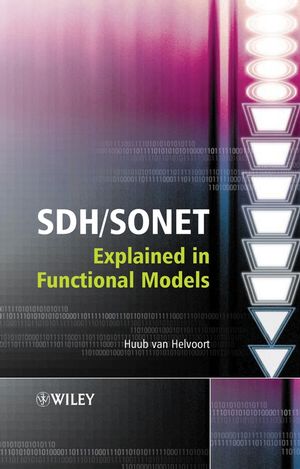SDH / SONET Explained in Functional Models: Modeling the Optical Transport NetworkISBN: 978-0-470-09123-4
Hardcover
300 pages
September 2005
 |
||||||
Acknowledgements.
Abbreviations.
1 Introduction.
1.1 History.
1.2 Justification.
1.3 Remarks on the concept.
1.4 Standards structure.
2 Functional modeling.
2.1 Functional architecture of transport networks.
2.2 Functional model requirements.
2.3 Functional model basic structure.
2.4 Functional model detailed structure.2
2.5 Client/server relationship.
2.6 Layer network interworking.
2.7 Linking the functional model and the information model.
2.8 Application of concepts to network topologies and structures.
3 Partitioning and layering.
3.1 Layering concept.
3.2 Partitioning concept.
3.3 Concept applications.9
4 Expansion and reduction.
4.1 Expansion of layer networks.
4.2 General principles of expansion of layers.
4.3 Reduction of detail.
5 Adaptation functions.
5.1 Generic adaptation function.
5.2 Adaptation function examples.
6 Trail termination functions.
6.1 Generic trail termination function.
6.2 Trail termination function examples.
7 Connection functions.
7.1 Generic connection function.
7.2 Connection function example.
7.3 Connection matrix examples.
8 Connection supervision.
8.1 Quality of Service.
8.2 Connection monitoring methods.
8.3 Connection monitoring applications.
9 Protection models.
9.1 Introduction.
9.2 Protection.
10 Compound functional models and their decomposition.
10.1 LCAS disabled VCAT functions.
10.2 LCAS-capable VCAT functions.
10.3 VCAT network model.
10.4 S4–Xc to S4–Xc interworking function.
10.5 VCAT-CCAT interworking network model.
11 Example functional models to exercise.
11.1 Device level functional model.
11.2 Equipment detailed functional model.
11.3 Network element functional model.
11.4 Trail connection model.
11.5 Synchronization network model.
11.6 OTN network element model.
11.7 Data transport model.
11.8 Ethernet layer network model.
11.9 MPLS layer network model.
Glossary.
References.
Index.



